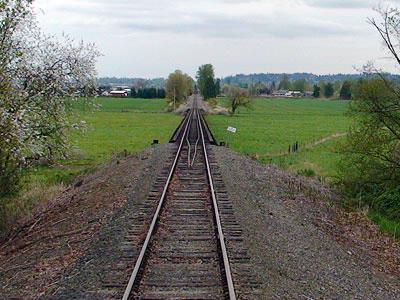
Thank you for continued interest in the Eastside Rail Corridor
Wednesday, February 27, 2013
 |
Thank you for meeting with City Councilmember Dean Randall, City Manager Larry Bauman and me in your Capitol office on February 13. We appreciate your continued interest in the Eastside Rail Corridor’s potential for improvements that will make public passenger services feasible as well as help to preserve the corridor for freight use and trail development. We want to reiterate and provide additional information that supports our request for $6.26 million in state capital funding needed to upgrade the Eastside Rail Corridor, which is owned by the Port of Seattle and other local governments in the region. We believe that it is important for state leaders to understand that no private company will invest in publicly owned rail infrastructure because it cannot be used as collateral to secure the investment. However, until such public investment is found to upgrade these tracks, passenger service is not feasible due to deteriorated track conditions that must first be repaired. The $6.26 million will be used along nearly 15 miles of track between Woodinville and Snohomish. This is a great short term jobs program and is a financial bargain: to lay more ties for a smoother ride, upgrade 11 bridges, 10 crossings, and do the ditching and brush cutting required to run passenger trains up to 30 miles/hour. That averages about $400,000 a mile – a fraction of the cost of highway upgrades. Furthermore, the potential exists for easily achieved multi-modal uses of the corridor. Sufficient rights of way exist in nearly all sections of corridor to provide ample room for rail and trail uses to exist side by side. Connecting this corridor to such trail systems as the Tolt-Pipeline Eastside Community Rail, the current operator that is working under agreements with the Port of Seattle to provide freight service and initiate excursion services on the rail corridor, is committed to ongoing track maintenance costs of $1.1 million annually once these tracks are upgraded to passenger rail status. Our city government sees the Eastside Rail Corridor as a nearly unprecedented opportunity for public use of a rail system that in recent decades has been underutilized. The ultimate vision and future goal of our local government and many others in the region is to see this corridor developed and extended to provide commuter rail services between Bellevue and Everett. This can be achieved at a fraction of the capital costs of Sound Transit’s existing commuter rail services. That is why we need your support and efforts this legislative session. Improving the tracks now will pave the way for future expansions of passenger services for this rail corridor. The risks of allowing this corridor to deteriorate and be carved up or severed at this time are significant. Your involvement at this time could be the most important action that could be taken to ensure that the broadest public uses of these rails will be possible both near term and in the decades to come. The recently formed Eastside TRailway Alliance—composed of local governments, business associations, wineries, and various groups committed to both rail and trail development—is devoted to seeing the Eastside Rail Corridor improved and expanded for public benefit. Few public projects in our region have attracted as much public support and interest as has this corridor. Few corridors of this type provide such opportunity for public benefit. We would appreciate your active support in helping our region maximize the public investments that have already occurred on the Eastside Rail Corridor. Devoting $6.26 million in state funds at this critical juncture might just be one of the best investments the state could possibly make during this legislative session—or possibly any other session, at least in recent times—for cost-efficient transportation services. Please let us know if we may be able to provide additional information that would support this request or assist you in your work on behalf of the people of our state. Letter from Mayor Guzak
Trail and Centennial Trail offers exciting opportunities to expand one of the fastest growing personal transportation and recreational developments that is transforming our region. Snohomish County is currently exploring funding options to purchase the northern section of this rail corridor for combined rail and trail uses.